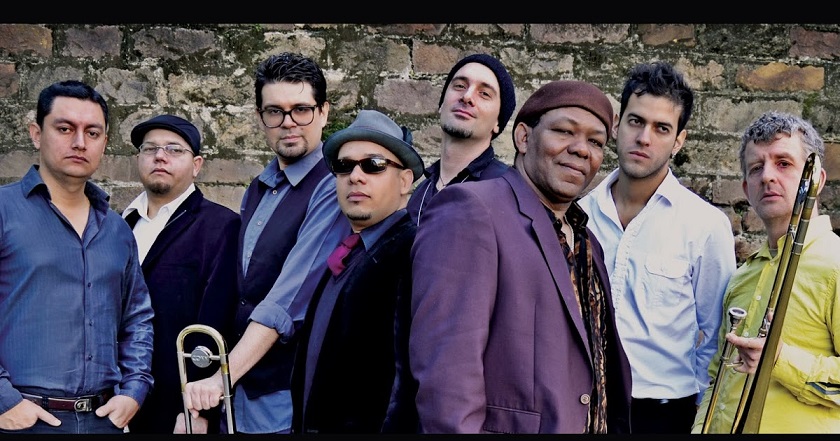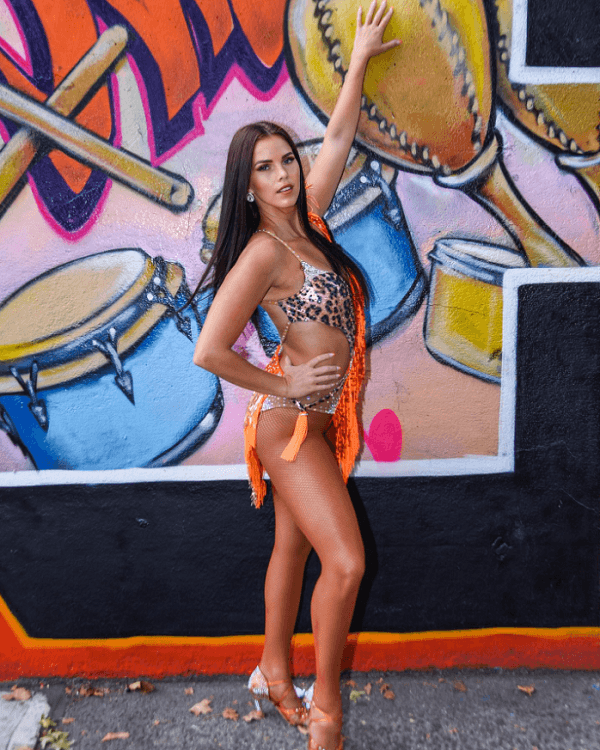North America / USA / New York
Social dancing is one of my favorite things about the Latin dance world. There’s something magical about going to any social, but especially one in New York City. As I step out of the elevator and into the social, New York’s busy streets fade away and transported to an entirely different time and place. Music vibrates through the room. The air hangs heavy with sweat. Here I am free to feel, to create, to imagine. Here I am safe.
But it didn’t always feel this way. There was a time when the idea of going to any social left me anxious and uncomfortable. I felt nervous asking leaders to dance. I dreaded the part in the dance when he would let me go and leave me on my own for shines––what would I do?! Surely I’d run out of steps and embarrass myself.
The biggest thing that has changed since then and now is my ability to follow. As I’ve become a better follower, I’m able to devote more energy to creating actual movement while I’m social dancing, and spend less time thinking about which foot I step with or which hand I take.

For me, a lot of the magic of social dancing comes from the movement itself. That dancer’s high comes from the physical exertion itself, the endorphins your body creates as it bends and twists, contracts and lengthens.
Practicing the very fundamentals of leadand-follow will help you get to this state in your own social dancing. Take classes and private lessons too, but don’t forget to spend time practicing on your own. Without dedicated practice, you’ll waste all of the time and money you spend on classes. It doesn’t matter if you practice in a studio space or in your living room, just devote time to practicing.
It’s also helpful to set a goal for yourself each time you go out social dancing and focus on that one particular thing all night. For example, if you just learned a new pattern in class, try to use it at least once during each dance. If you’re working on transferring your weight, pay special attention to your six/seven or your two/three during every dance.
Actively creating a community is another large part of being a successful social dancer. While the salsa scene is an incredibly diverse community, it still has a strong Latin influence, and there are certain Latin cultural norms present throughout any salsa community regardless of city, state, or country. Perhaps the one that took me the longest to figure out is the idea that it’s your responsibility to go around and say hello and goodbye to everyone in the room, whether you know them well or not.
Growing up I was taught that it is rude to ask questions or insert yourself into a conversation with people you don’t know that well. It took me a while to learn and understand that at a salsa social, it’s considered rude not to. Be the person who walks into the room and says hello to everyone with a kiss on the cheek. Say hello to them even if you don’t know their name, or don’t quite recognize their face. Even if doing so feels a bit uncomfortable. Make sure to make the rounds and say goodbye before you leave the event too.

Successful social dancers also ask others to dance. Followers, this applies to you as much as it does to leaders! Ask the person you really want to dance with to dance, even if you’re scared to do it. Ask the person you’re not excited about dancing with too. It will make their night. Ask the regulars in the community you see all the time, the newcomers, and out of town visitors.
Finally, a huge part of creating any community is showing up. You don’t have to go out social dancing every weekend, but do make an effort to go out regularly. Show up and show your support for recurring socials, as well as those special events and anniversary parties. The social dancing community only flourishes as much as the people in it and for this global community to grow, we all have to devote energy and time to it.















